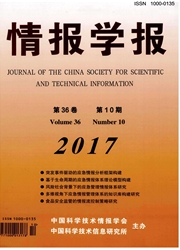

 中文摘要:
中文摘要:
利用PrestigeRank算法对2004—2008年《中国科技论文与引文数据库》(CSTPCD)中收录的科技论文进行了评价研究,并选取了预防医学领域中PrestigeRank算法排序靠前的论文进行同行评议研究。对不同学科、不同发表时间论文的被引次数、PrestigeRank算法进行了比较研究,也对预防医学领域论文进行了PrestigeRank算法、同行评议的比较研究。研究表明,被引次数、PrestigeRank算法具有正相关性,但被引次数与PrestigeRank算法的Spearman相关系数随被引次数的增加而减少。另外,相关性在不同学科、不同发表时间等方面存在差异。地学、生物、物理、化学和力学等基础领域的论文其被引次数与PrestigeRank算法的一致性相对较高;而药物学、预防与卫生、临床医学等医学领域的论文其被引次数与PrestigeRank算法的一致性相对较低。PrestigeRank算法比被引次数方法更有利于更新和更老发布的论文。利用同行评议方法对预防医学领域论文的创新性、论文效益和学术水平三个方面进行了评价,结果表明,同行评议结果的分类指标中存在一致性差异,其中创新性与论文效益间更是没有明显相关性。专家对论文创新性的评价结果与被引次数和PrestigeRank排序结果不相关,而专家对于论文学术水平、论文效益的评价与被引次数和PrestigeRank排序基本吻合。被引次数、PrestigeRank与同行评议的总分之间存在正相关关系,这说明同行评议结果与被引次数和PrestigeRank排序结果具有一定的一致性。
 英文摘要:
英文摘要:
We make use of PrestigeRank to give the ranking of all papers in the Chinese Scientific and Technology Papers and Citation Database(CSTPCD) published between 2004 and 2008. We also makes a ranking study of the papers in the area of preventive medicine with Peer Review. We compared PrestigeRank result with citation ranking, and Peer Review. We found PrestigeRank is significantly correlated with citation counts. We also found it is relation to the subject and the dates the papers were published. We also found PrestigeRank is correlated with Peer Review. It indicates prestigeRank can reflect papers' authority.
 同期刊论文项目
同期刊论文项目
 同项目期刊论文
同项目期刊论文
 期刊信息
期刊信息
